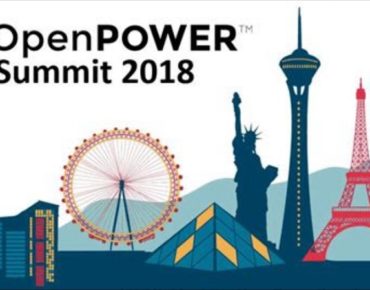Power9 and the ‘D Word’: IBM Touts OpenPOWER Ecosystem, Announces New Customers, Products for AI and Hyperscale Datacenters

At SC17 in Denver four months ago, Ken King, GM, OpenPOWER, IBM Systems Group, told a somewhat jaundiced trio of journalists that 2018 would, finally, after several years of expectations, be the year OpenPOWER and IBM’s POWER processor makes a dent in the HPC/advanced scale server universe. Why 2018? Because, King said, the OpenPOWER ecosystem is reaching critical mass, creating the platform of hardware/software/networking products, marketing/sales and customer purchases from which OpenPOWER will take on a more encouraging trajectory.
This week at the OpenPOWER Summit in Las Vegas, Ken King is feeling his oats. The foundation announced that more than 325 member companies, including IBM, Google, NVIDIA, Hitachi and Tencent, are working in concert to develop products and services that target AI workloads in the enterprise. The event included software, hardware and cloud vendors that have built more than 50 new OpenPOWER-based products, the foundation said.
The Google win has King and his colleagues particularly gleeful. In an interview yesterday they happily shared a tweet from industry analyst Patrick Moorhead highlighting a public statement from Maire Mahony, hardware engineering manager at the normally closemouthed web giant regarding Zaius, a Power9 server built for Google by Rackspace: “BOOM! Google’s Maire Mahony: ‘Zaius deployed in Google’s Data Center.’ ‘Scaling up machine count.’ ‘Considered Google Strong.’ They finally used the ‘D’ (deployment) word.”
King said Mahony told him that “Google Strong means it’s a rock solid design, it’s ready to go, it’s bump-free, it’s at a place where it’s production stable.”
Looking ahead, King said the OpenPower Foundation’s goal is for POWER processor-based servers to grab 20-30 percent over the next four years of the Linux server market.
Other Power9 customers, according to an IBM blog, include:
• LimeLight, with tools that stream digital content, such as music and video, has embraced OpenPOWER “to get around the PCIe Gen3 bottleneck on x86” servers, IBM said. “By using PCIe Gen4 on Power9, their clients can deliver content to their customers faster and with less buffering.”
A message throughout the OpenPOWER Foundation proceedings, naturally, is OpenPOWER poses advantages over Intel x86-based servers, which dominate the data center market. NVIDIA, Wistron, Hitachi, Inspur, Rackspace, and Atos discussed “how their customers and the industry are looking for x86 alternatives, and with industry-exclusive technology like next-generation NVIDIA NVLink, OpenCAPI and PCIe Gen4,” along with the IBM Power9 CPU, announced in December, which IBM said is the only processor with OpenCAPI and PCIe Gen4, providing “nearly 10x the I/O bandwidth of x86 with shared memory coherence…”
King said an indication of OpenPOWER’s growing maturity is not only expansion of member companies, but also that the wave of new products introduced soon after the Power9 chip launch in December.
“The one thing that’s really different…is when we announced Power8, we announced OpenPower, but innovations weren’t coming out right away, it took time for innovations to come out…,” he said. “With Power9, we’re rolling Power9 out at the same time as we’re rolling the ecosystem for Power9 out and this is the first instantiation of Power leveraging OpenPOWER it’s an ecosystem roll out, versus just an IBM rollout, and that’s the thing we are most excited about.”
As for the state of the ecosystem, King said “we think membership is strong – we’re happy with the level of membership. What we’re really focused on is innovation and how many folks are actually developing, delivering, using – and that’s where we’re excited about the growth. We got over 100 reveals/innovations…, which was great. We are able to articulate that the number one server vendors in Europe, China and Japan and one of the top ODMs in the world are all out there saying that they are building Power9/OpenPOWER systems. Bull/Atos, Inspur, Hitachi and Wistron. And in the US, Rackspace, building for Google, as well. So we are pleased with the progress of server vendors that are out there supporting the platform.”
Tiffany Trader, managing editor of sister publication HPCwire, contributed to the reporting of this story.












